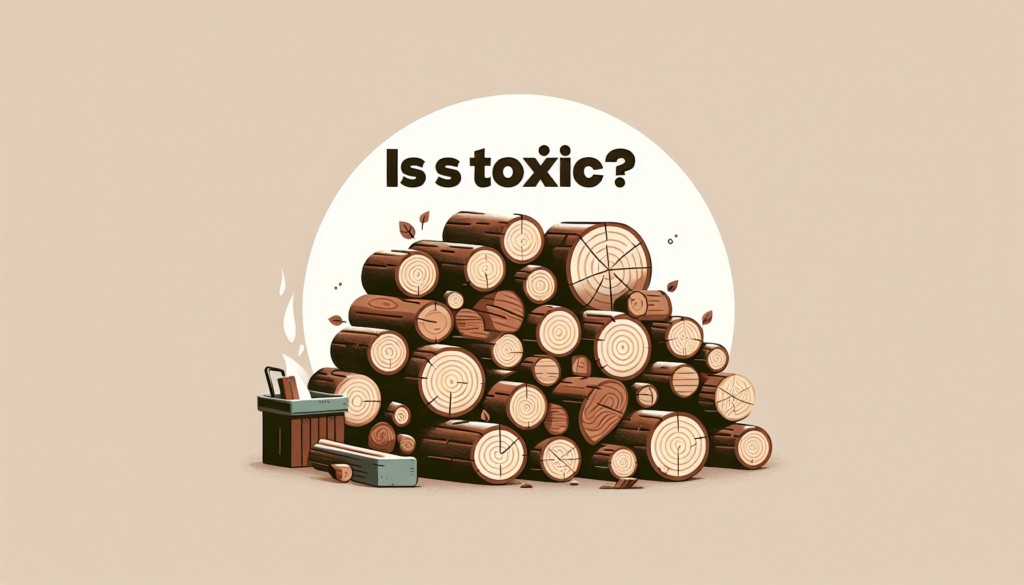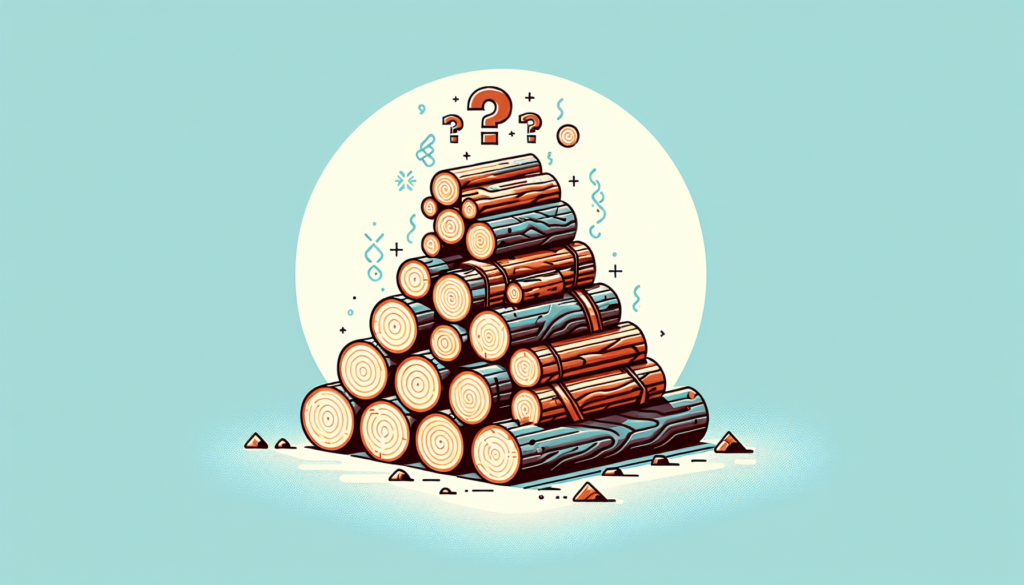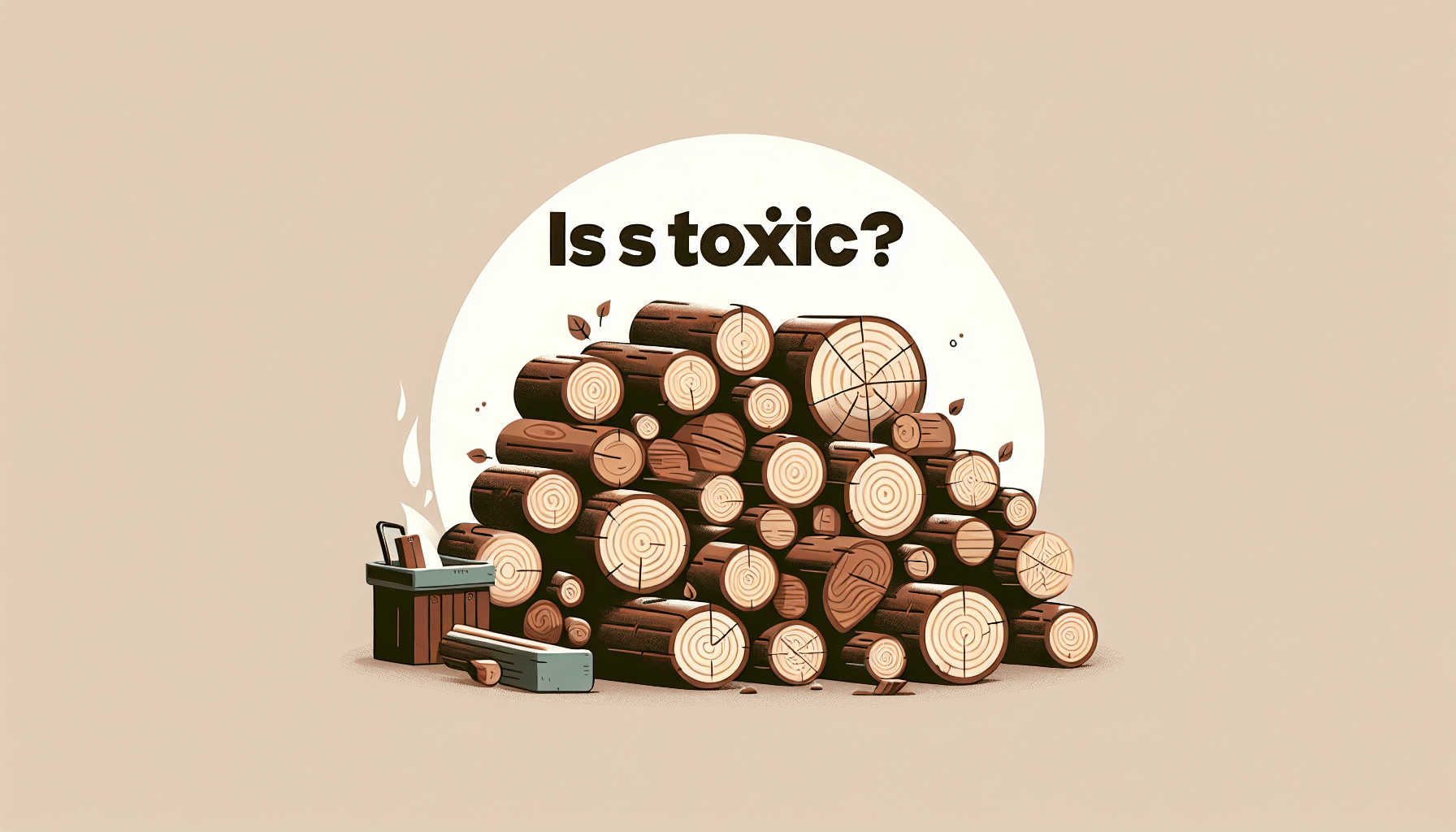Turns out, not all wood is created equal when it comes to burning. In “Is There Any Wood That Is Toxic To Burn?” I dive into the surprising facts about certain types of wood that release harmful toxins when burned. From treated lumber to specific tree species, I uncover what you need to avoid tossing into your fireplace or fire pit to keep the air clear and your health intact. “Is There Any Wood That Is Toxic To Burn?”
Is there any wood that is toxic to burn? I found myself asking this question last winter as I stared into the flames of my fireplace, imagining the cozy nights ahead, snug under my blanket. There’s something about the crackling sound and the warm, flickering glow of a fire that turns a regular evening into a magical experience. But then I started to worry. Little thoughts niggled at my brain, questions popping up like uninvited guests at a party.
I mean, who hasn’t thrown in a random piece of wood without considering its origin? We love a carefree bonfire or a romantic fireplace setting, but how much thought have we put into the type of wood we burn? I decided it was time to get a grip on the subject and figure out if any of this wood I was so fond of tossing into the fire could be bad for me—or worse, toxic.

The Basic Chemistry of Wood Burning
Alright, let’s start with a little science because you can’t tackle a question like this without knowing what happens when wood burns. I promise to keep it simple. When you burn wood, you’re basically setting off a chemical reaction. Wood is primarily made of carbon, hydrogen, and oxygen. When it burns, it reacts with the oxygen in the air to form carbon dioxide (CO2) and water (H2O). Those beautiful flames are mostly vaporized water and various gases combusting.
Good Combustion vs. Bad Combustion
Now, there’s “good” combustion and “bad” combustion. Good combustion is what we aim for—it’s when the fire heats the wood to the point where it breaks down cleanly into carbon dioxide and water. Bad combustion is when this breakdown process goes haywire and creates dangerous byproducts like carbon monoxide (CO), particulate matter, and volatile organic compounds (VOCs). These are the culprits that can make burning certain types of wood harmful.
Types of Wood That Are Toxic to Burn
Not all woods are created equal when it comes to burning them. Some can produce toxic chemicals, either naturally present in the wood or because of treatments applied to it. Let’s dive into the kinds of wood you should think twice about before throwing into your fireplace.
Chemically Treated Wood
This should be a no-brainer, but let’s call it out anyway. Chemically treated wood often comes in the form of construction scraps. Pressure-treated wood, laminated wood, and particleboard belong to this category. These woods are treated with chemicals to make them resistant to insects, rot, and moisture. When you burn them, these chemicals are released into the air—inhaling them can be hazardous to your health.
Common Chemicals Found in Treated Wood:
| Type of Wood | Common Chemicals |
|---|---|
| Pressure-treated wood | Chromated Copper Arsenate (CCA), Alkaline Copper Quaternary (ACQ) |
| Laminated wood | Formaldehyde-based glues |
| Painted or stained wood | Lead-based paints, VOCs from stains |
Driftwood
Driftwood might have that picturesque, beachside allure, but burning it is a bad idea. Driftwood that’s been floating in saltwater can have a high salt content. When burned, it releases chlorine gas and other harmful compounds like dioxins. So as tempting as it might be to toss some driftwood pieces into the fire for that seaside feel, it’s best avoided.
Green Wood
Green wood refers to wood that’s freshly cut and hasn’t had time to season (or dry out). This wood still holds a significant amount of water. When you try to burn it, it leads to “bad” combustion, producing a lot of smoke and particulate matter. Inhaling this smoke can be irritating to your respiratory system, not to mention it’ll make your chimney a sooty mess.
Poisonous Wood Species
Mother Nature isn’t always our best friend. Some wood is inherently toxic due to the chemical compounds naturally present in the tree. Here’s a quick list:
| Wood Species | Toxic Chemicals |
|---|---|
| Oleander | Oleandrin, nerioside |
| Yew | Taxine alkaloids |
| Laburnum | Cytisine |
| Sassafras | Safrole |
Burning these woods can release these toxic compounds into the air, which is a big no-no for your lungs.
Recognizing Safe Wood to Burn
Okay, now that we’ve covered what not to burn, let’s get into the good stuff. What kinds of wood are safe to burn, and how do you choose them?
Seasoned Hardwood
Seasoned hardwood is like the golden ticket of firewood. Hardwood comes from trees like oak, maple, and beech. When seasoned (dried out for at least six months), it burns efficiently and produces a lot of heat with minimal smoke and harmful emissions. It’s excellent for both warmth and a clean burn.
Softwood
Softwoods like pine, fir, and cedar are usually not the first choice for indoor fireplaces but are good for outdoor fires. They tend to burn faster and can produce more creosote—a sticky, flammable substance—inside your chimney. But if you season them well, they can be used effectively and are generally safe.
Fruitwoods
Fruitwoods like apple and cherry are another good option. They burn cleanly and produce a pleasant aroma. These woods can be slightly pricier, but they add a lovely ambiance to your fire experience.
Safety Tips for Burning Wood
Alright, you’ve chosen your wood and you’re ready to light it up. But let’s talk safety. Burning wood isn’t inherently dangerous, but it can be if you don’t follow some basic guidelines.
Keep It Dry
Wet wood leads to bad combustion. Make sure your wood is well-seasoned. Dry wood burns more efficiently and produces less smoke.
Proper Ventilation
Always ensure your fireplace or wood stove is well-ventilated. This prevents the buildup of harmful gases like carbon monoxide.
Regular Maintenance
Have your chimney cleaned and inspected regularly to prevent creosote buildup, which can lead to chimney fires.
Fire Safety Precautions
Never leave a fire unattended, keep a fire extinguisher handy, and make sure you have smoke alarms and carbon monoxide detectors installed.
Avoid Overloading
Don’t overload your fireplace or stove. A smaller, controlled fire is safer and burns more efficiently than a large, roaring blaze.

Environmental Impact
Burning wood isn’t just about personal safety; it also impacts the environment. When done improperly, it can contribute to air pollution. Choosing clean-burning woods and following safe practices minimizes your ecological footprint. Some areas even have restrictions on burning wood to control air quality.
Carbon Neutral?
Some folks argue that burning wood is carbon-neutral because trees absorb CO2 as they grow. However, this isn’t the full picture. The immediate impact of burning wood does release CO2, and the regrowth of trees is a long-term process. This doesn’t mean you should swear off wood fires altogether but be mindful of your overall environmental impact.
When In Doubt, Don’t Burn It
Let’s wrap all this up. The next time you’re about to start a fire, think twice about the wood you’re using. If you’re unsure about a piece of wood—where it came from or if it’s treated—err on the side of caution and don’t burn it. Stick to well-seasoned hardwood, and you’ll be safe, warm, and breathing easy.
So, is there any wood that is toxic to burn? Absolutely. But by knowing what to avoid and what’s safe, you can enjoy those cozy fires without any worries. Here’s to many more evenings of crackling logs and warm, flickering flames, minus the nagging concerns. Now, I think I’ll go find a good book and settle in by the fire—I’ve earned it, don’t you think?

